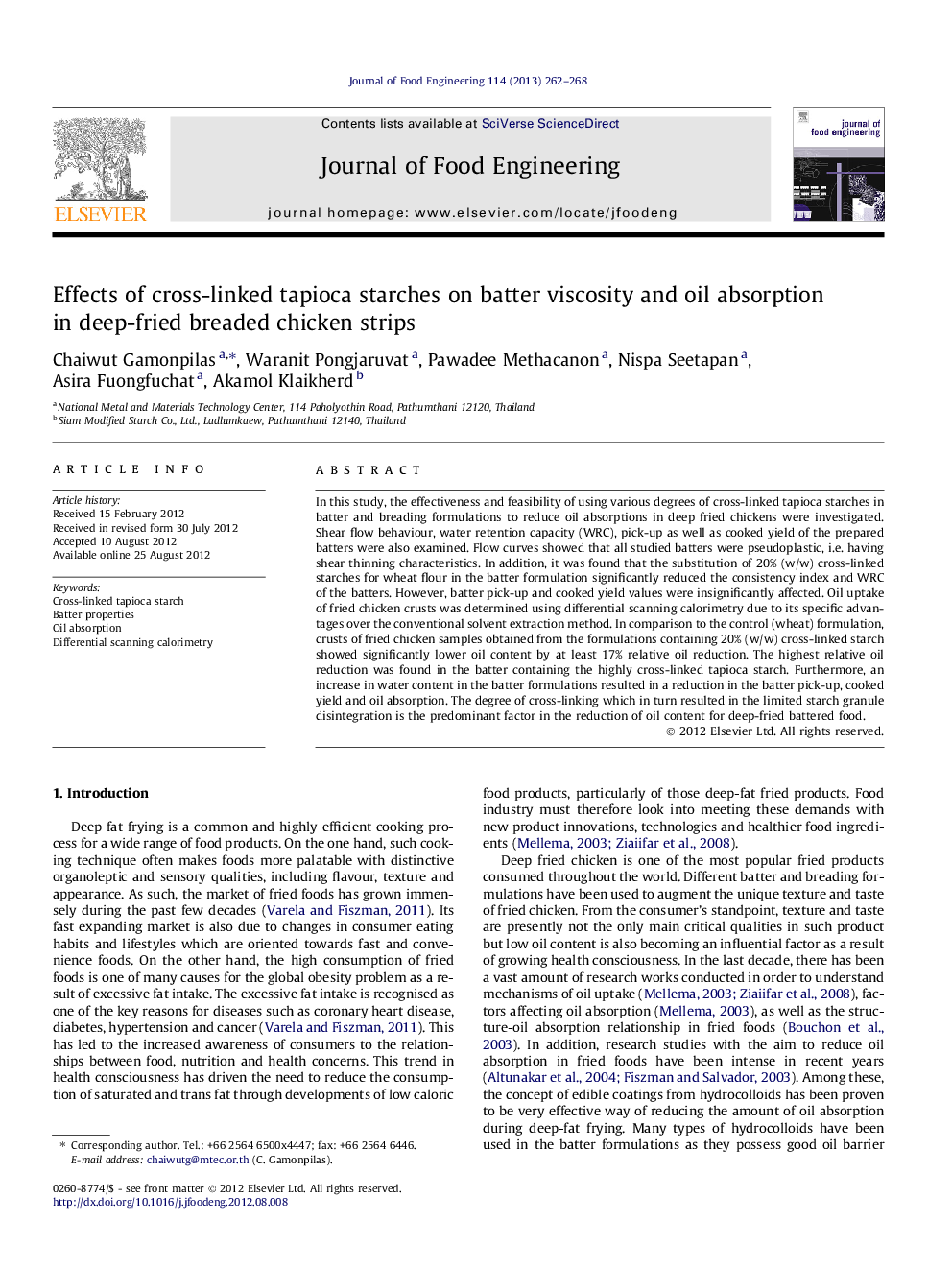| Article ID | Journal | Published Year | Pages | File Type |
|---|---|---|---|---|
| 223712 | Journal of Food Engineering | 2013 | 7 Pages |
In this study, the effectiveness and feasibility of using various degrees of cross-linked tapioca starches in batter and breading formulations to reduce oil absorptions in deep fried chickens were investigated. Shear flow behaviour, water retention capacity (WRC), pick-up as well as cooked yield of the prepared batters were also examined. Flow curves showed that all studied batters were pseudoplastic, i.e. having shear thinning characteristics. In addition, it was found that the substitution of 20% (w/w) cross-linked starches for wheat flour in the batter formulation significantly reduced the consistency index and WRC of the batters. However, batter pick-up and cooked yield values were insignificantly affected. Oil uptake of fried chicken crusts was determined using differential scanning calorimetry due to its specific advantages over the conventional solvent extraction method. In comparison to the control (wheat) formulation, crusts of fried chicken samples obtained from the formulations containing 20% (w/w) cross-linked starch showed significantly lower oil content by at least 17% relative oil reduction. The highest relative oil reduction was found in the batter containing the highly cross-linked tapioca starch. Furthermore, an increase in water content in the batter formulations resulted in a reduction in the batter pick-up, cooked yield and oil absorption. The degree of cross-linking which in turn resulted in the limited starch granule disintegration is the predominant factor in the reduction of oil content for deep-fried battered food.
► Cross-linked tapioca starches to reduce oil absorption in deep fried chickens. ► Differential scanning calorimetry to measure oil content in crust samples. ► Batters with 20% cross-linked starches could lower oil uptake by at least 17%. ► The highest oil reduction was found in batter with highly cross-linked starch. ► Degree of cross-linking plays an important role in oil reduction of fried samples.
